[ad_1]
Usnea lichen is a medicinal must-have for homesteaders and survivalists. For hundreds of years, we’ve used this antimicrobial to clear infections, relieve ache, and soothe irritation.
Nonetheless, the forest is stuffed with lichens. How will you know you’re accumulating the suitable stuff?
Learn on to discover ways to determine usnea lichen and distinguish it from widespread look-alikes within the subject. You’ll additionally get essential data on sustainable harvesting to make sure these advantages stay obtainable for future generations!
Usnea Lichen ID Guidelines
Fruticose (branching) physique
Spherical, hair-like strands; lengthy or brief
Predominantly inexperienced; tinted grey, purple, or yellow
White interior core
Rising on bushes
Tapered or disced ends
Look
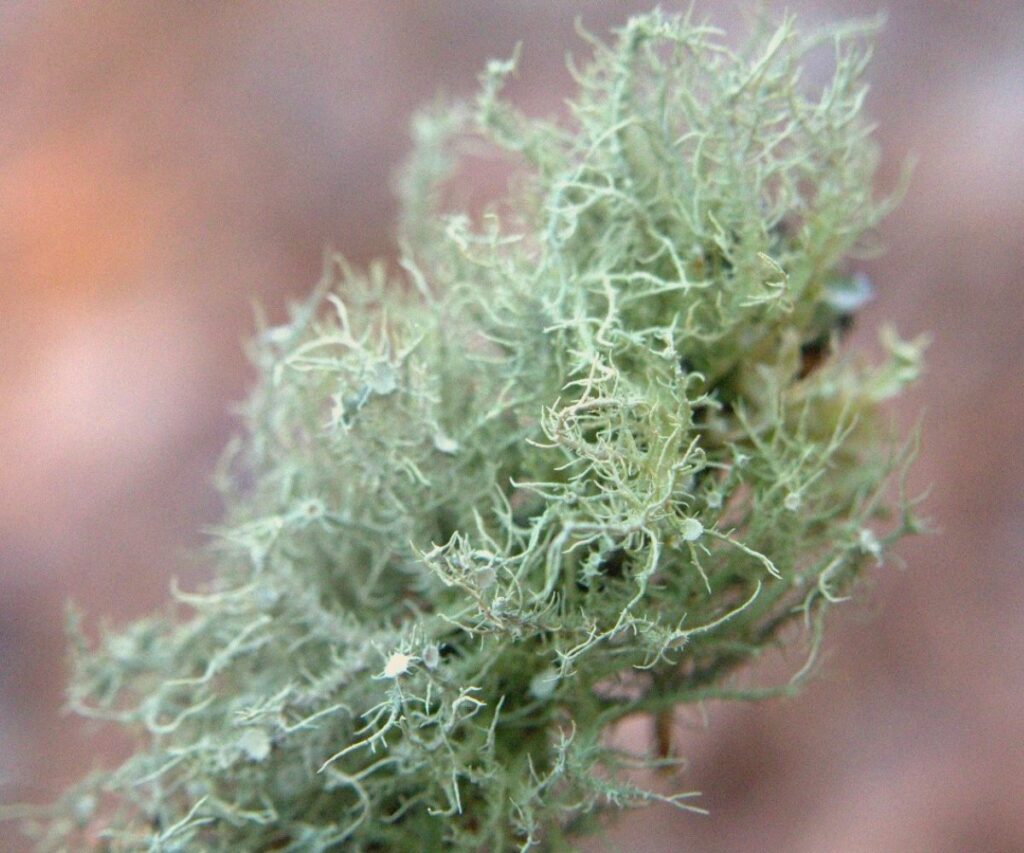
Usnea is a phenomenal lichen. It hangs pendulously from cover branches excessive within the sky, with some specimens reaching over 5 toes lengthy. In fact, not all develop to such a spectacular measurement. Those in my space are normally small, sprouting from twigs in tufty eruptions measuring only a few inches throughout.
It’s straightforward to see why usnea lichen’s nicknames embrace “previous man’s beard,” “witches’ hair,” and “forest beard.” It’d develop outward like a toddler’s cowlick when younger, however older lichens sport a extra distinguished mane that sags below its personal weight precisely like facial hair.
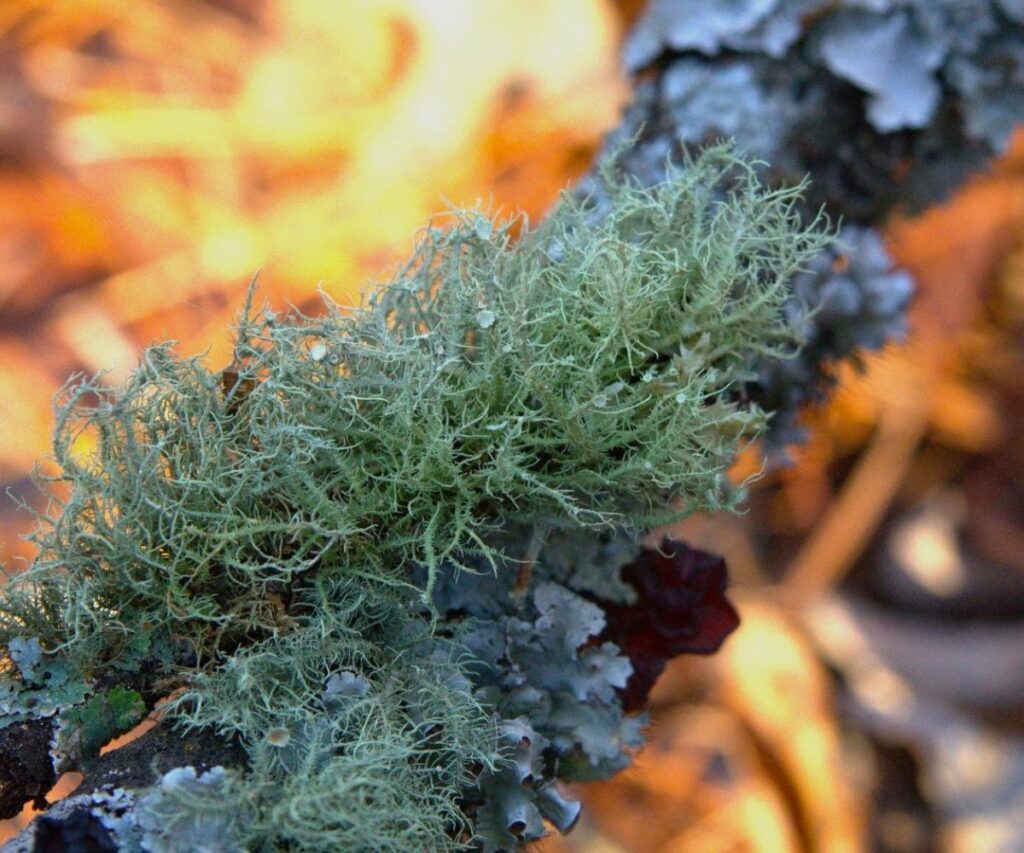
Right here’s what to search for:
Colour: Usnea is distinctly inexperienced, however numerous species could also be tinted grey, yellow, beige, or brown. Specimens could also be mild, darkish, brilliant, or delicate. Coloring varies with environmental situations and moisture stage, with dry lichens normally presenting much less vibrantly.
Texture: Usnea will be tender and silky or robust and wiry. Dry specimens are at all times rougher than recent specimens, and older lichens could also be harder than youthful counterparts of the identical species.
Form: Usnea is a fruticose lichen characterised by shrubby development resembling a coral or bush. Totally different species will likely be formed in a different way, with some resembling little bushes and others embracing the “forest beard” moniker.
Apothecia: Usnea has a enjoyable propensity to combine issues up and may reproduce sexually or asexually. Throughout sexual replica, usnea sprouts apothecia, which appear to be small discs or cups on the finish of their tendrils.
Attachment: Usnea attaches to its substrate at a single level. Different lichens and moss connect at quite a few factors or throughout, however your entire usnea construction grows from only one department.
Species Variation
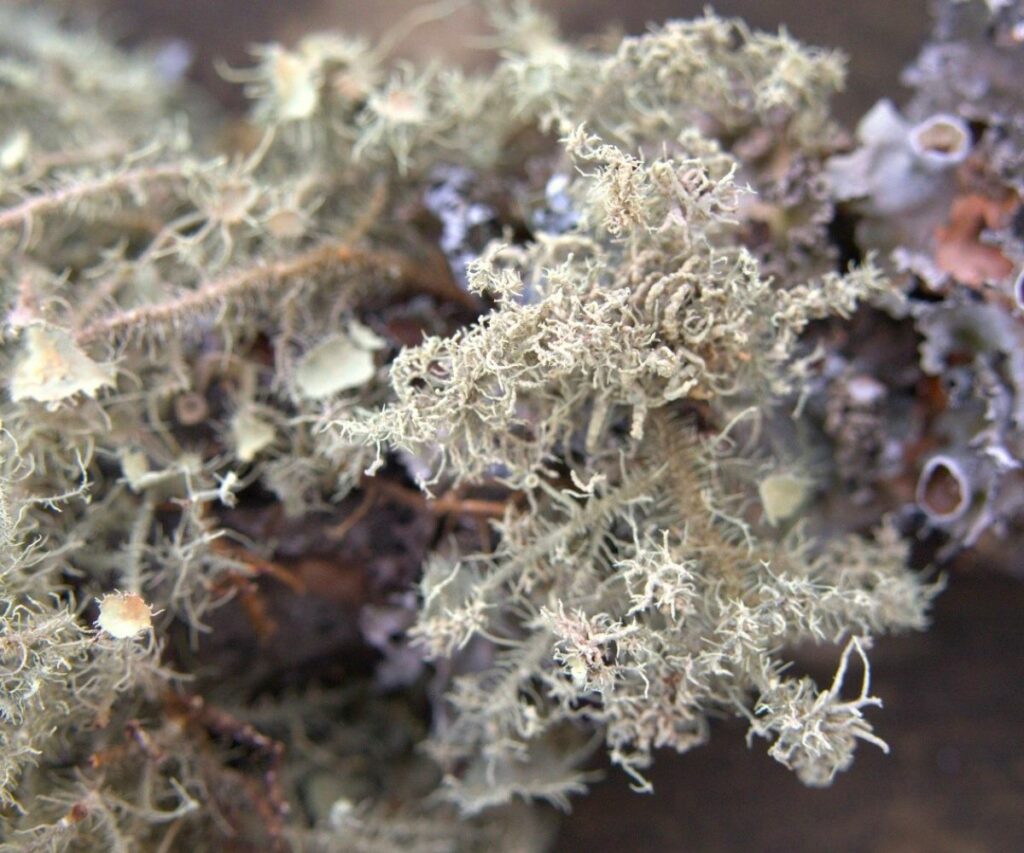
As of proper now, there are round 360 species belonging to the genus Usnea. All share sure traits, however they’ll range broadly in look.
Usnea species you may encounter in several North American areas:
Usnea longissima: Actually resembling an previous man’s beard, U. longissima is mild yellow-green and drapes majestically over the branches of conifer bushes. It not often options apothecia and is most typical within the Pacific Northwest.
Usnea strigosa: Quick and stubby, U. strigosa resembles coral greater than beard hair and prefers oaks to pines. It options quite a few giant apothecia and grows all through the southern and jap US.
Usnea cavernosa: Massive and droopy, U. cavernosa is widespread at excessive elevations in humid mid- and southwest mountainous areas. Its tendrils are skinny and stringy however easy, and it prefers spruce bushes.
It’s difficult to positively determine an usnea lichen by species. With no microscope, an intensive botanical schooling, and a working data of the genus, we’re left floundering in the dead of night.
Happily, all will not be misplaced. We will nonetheless take a look at a lichen’s total traits to find out with certainty that the specimen in query is usnea. In that case, then it’s medicinally helpful. Whereas actual composition might range between species, all usnea comprise the useful usnic acid we’re after.
Some species are uncommon and tender, whereas others are extra prolific and hardier. Relying on the place you reside, it’s possible you’ll discover dozens of various varieties rising in the identical forest.
So, even when two fruticose lichens differ dramatically, take note of their traits — they might each be usnea!
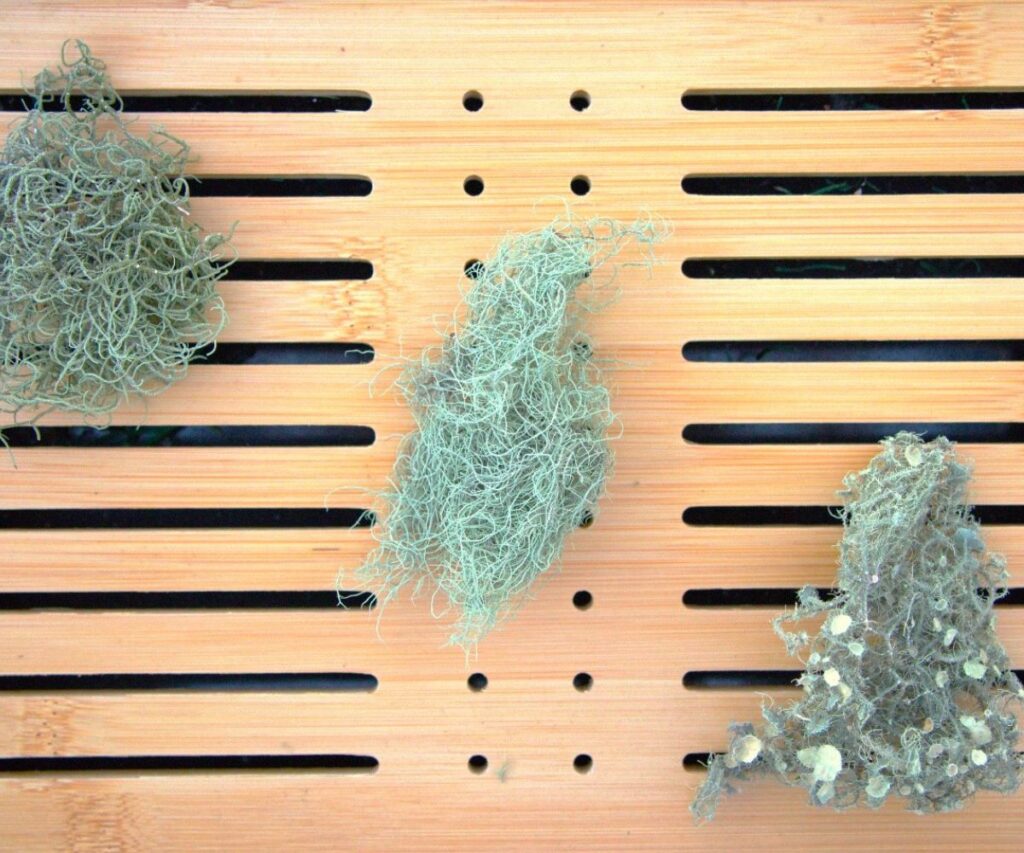
The Core Rule
There’s one factor that every one usnea species have in widespread: their white interior core.
Different mosses and look-alike lichens function insides that match their outdoors coloration. Nonetheless, usnea has a white core beneath its outer inexperienced flesh that appears like a bit of wire.
The wire is typically elastic in recent specimens, springing again when pulled. In older or dried specimens, it loses this elasticity. Once you discover what you consider to be usnea, peel again the sheath round a thick part of its shaft to test for the wire.
Each single usnea species has a white core inside. If there’s no white core, it’s not usnea. Extra to the purpose, so far as we all know, solely usnea species have a white core. Which means if it’s white inside, you’ve discovered usnea.
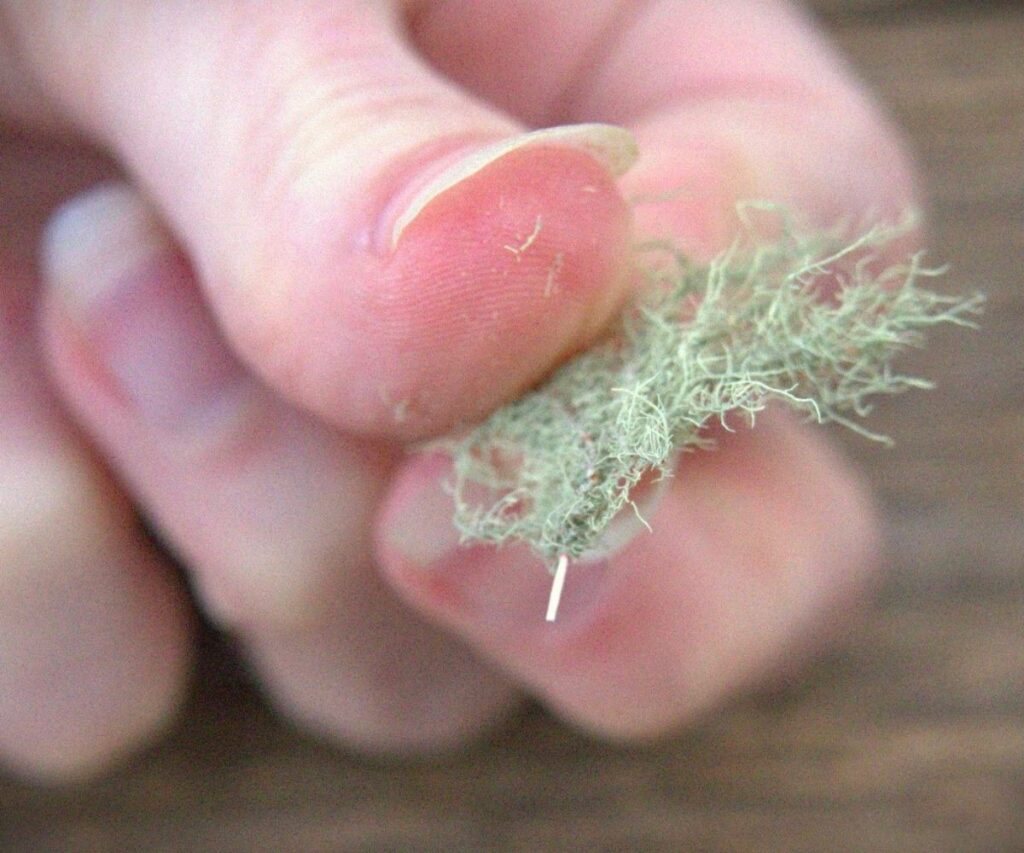
Habitat and Season
Usnea lichen grows internationally, and a number of totally different species populate each single state within the US.
It isn’t straightforward to pinpoint an actual habitat as a result of every species is so variable, however all have some issues in widespread. Usnea lichen prefers high-moisture, old-growth deciduous or hardwood forests. It will possibly populate any tree, with some species preferring conifers and others preferring hardwoods, like oak and beech.
It seldom, if ever, grows on rocks or soil. As a substitute, it typically grows on branches with different lichens, fungi, or algae.
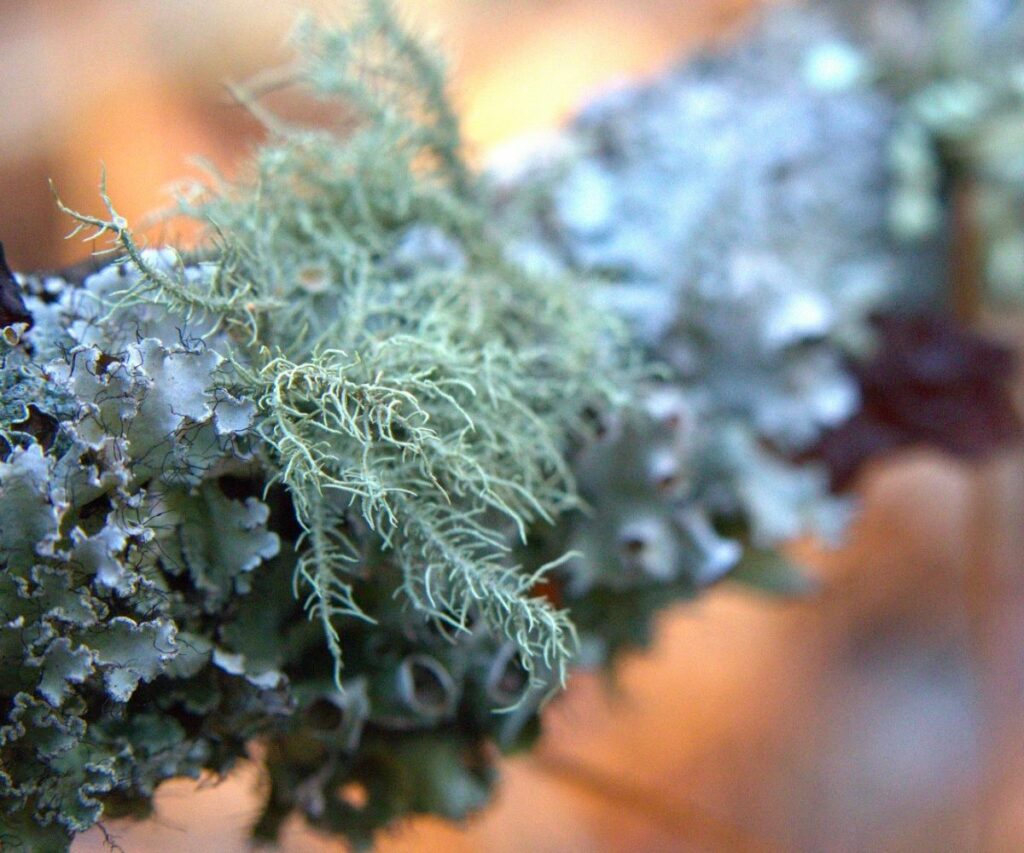
Usnea has no particular season. It grows extremely slowly and takes a few years, typically a long time, to turn out to be sizeable. The precise development fee varies between species and placement. It relies upon primarily on environmental elements like moisture and air high quality, however some develop lower than a millimeter every year.
Regardless of these info, I at all times discover extra usnea lichen rising across the spring. After the snow melts and through heavy rains, water is extra plentiful, which can trigger a spike in development.
Development Situations
Like all lichens, usnea is a botanical centaur. It’s a mixture of fungi and algae that develop collectively in a symbiotic relationship to type a completely new organism.
Usnea lichen belongs to the household Parmeliaceae. Species are at all times a mixture of fungi from the phylum Ascomycota and algae from the phylum Chlorophyta.
The fungus kinds the basal fruticose construction, whereas the alga kinds a protecting and nutritive barrier via which the union feeds.
The atmosphere should assist each the fungus and the alga that type usnea. Water is important right here. Usnea is widespread close to rivers and lakes and fails to thrive in dry situations.
Usnea can not develop in areas which are extremely polluted.
Like many lichens, it absorbs chemical compounds like a sponge and dies as soon as it turns into inundated with toxins. It’s delicate sufficient to be a extremely dependable indicator of excellent air high quality.
Sadly, this implies its inhabitants is rapidly diminishing. Whereas it could possibly develop in all types of elevations and climates, it can not develop with out clear air.
As soon as thought-about an extremely widespread lichen, usnea is slowly starting to vanish as air pollution turns into extra rampant.
Some species are endangered in a lot of North America, together with U. longissima. It has disappeared completely from many areas in Europe and Scandinavia.
Sustainable Harvesting
Regardless of its big selection, a world improve in air air pollution may spell dire penalties for usnea lichen. As a result of it’s turning into so uncommon, it’s crucial to reap this lichen sustainably.
The primary rule of sustainable harvesting is to gather usnea solely from fallen twigs and branches. By no means choose usnea from a dwelling tree. Typically, the wind blows usnea off branches, and also you’ll discover clumps of it on the bottom. Accumulating these rudderless specimens is right since they are going to now not develop.
Nonetheless, solely acquire as a lot as you want to your desired utility. Usnea typically reproduces via fragmentation, so windblown lichens should still serve to repopulate an space. Even useless specimens are integral to the woodland ecosystem, appearing as fertilizer and meals for forest creatures.
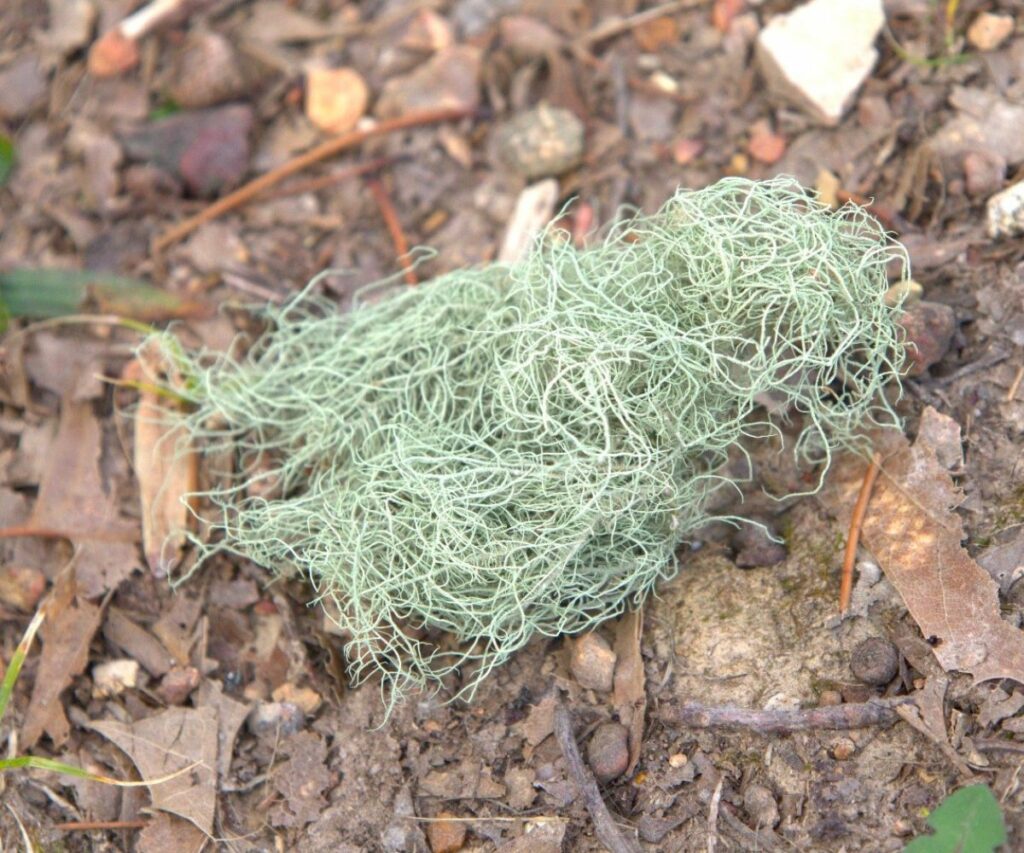
Play It Secure
Needless to say usnea lichen is very absorbent. Any poisonous supplies close by, together with naturally occurring toxins and heavy metals, will contaminate it.
You need to keep away from ingesting these, so solely forage usnea lichen in locations freed from contamination and air pollution.
Recognizing Widespread Look-Alikes
Ramalina
The Ramalina genus accommodates many inexperienced fruticose lichens. Quite a few Ramalina species produce apothecia and type lengthy, skinny hairs that resemble usnea.
The Ramalina species I discover normally have thicker, flat hairs and a extra compact construction than usnea. Ramalina additionally doesn’t discriminate concerning substrate; yow will discover them on wooden, rock, and even typically on soil.
Regardless of their development habits, the 2 will be arduous to differentiate with out peeling again the outer layer of flesh. Inside a Ramalina, there isn’t any white core.
Alectoria
Alectoria species are fruticose lichens of the household Parmeliaceae with a large distribution. They’re comparatively widespread all through North America, South America, and Europe.
Alectoria prefers to develop on conifers in humid forests however might develop on bark, wooden, rock, and soil. Whereas some species are branched, others are extra rotund with thick cords and few branches.
Alectoria lichens are sometimes inexperienced however could also be brown, streaked, grayish, or blackish. They normally reproduce asexually and barely function apothecia. In addition they lack usnea’s white interior wire.
Spanish Moss
It’s straightforward to mistake Spanish moss for usnea. This imposter is named Tillandsia usneoides within the scientific group, with usneoides actually translating to “resembling usnea.”
However don’t be fooled. Spanish moss will not be a lichen. It’s not even a moss — it’s a perennial bromeliad plant belonging to the identical household as pineapple.
Nonetheless, it hangs in lengthy, beard-like strands from tree limbs identical to usnea.
Spanish moss might develop bigger than usnea and sport longer strands, typically as much as 25 toes. The colour is never as brilliant as usnea, and this plant lacks the fragile coral construction that makes our lichen so loveable.
If ever unsure, peel open a strand. Spanish moss is not going to have a white wire beneath its outer layer as usnea does.
Usnea lichen is a phenomenal botanical masterpiece with many well being and wellness advantages. Now that you understand how to determine this pretty lichen, it’s time to hit the path and begin foraging some as we speak!
[ad_2]
Source link




